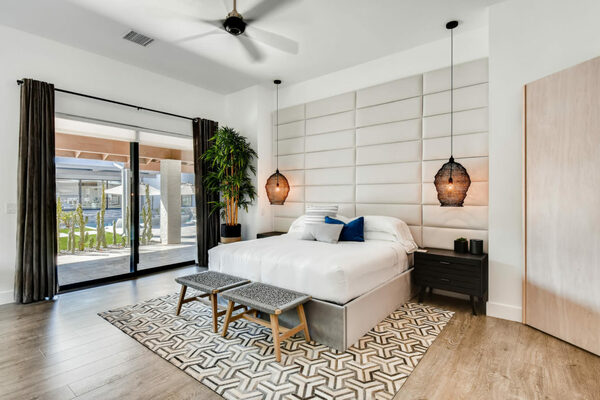Notifications
ALL BUSINESS
COMIDA
DIRECTORIES
ENTERTAINMENT
FINER THINGS
HEALTH
MARKETPLACE
MEMBER's ONLY
MONEY MATTER$
MOTIVATIONAL
NEWS & WEATHER
TECHNOLOGIA
TV NETWORKS
VIDEOS
VOTE USA 2026/2028
INVESTOR RELATIONS
DEV FOR 2025 / 2026
ALL BUSINESS
COMIDA
DIRECTORIES
ENTERTAINMENT
FINER THINGS
HEALTH
MARKETPLACE
MEMBER's ONLY
MONEY MATTER$
MOTIVATIONAL
NEWS & WEATHER
TECHNOLOGIA
TV NETWORKS
VIDEOS
VOTE USA 2026/2028
INVESTOR RELATIONS
DEV FOR 2025 / 2026
 Steve Riley -
Sat at 4:26 PM -
Other -
Photography
Inland Empire Real estate photography
-
49 views -
0 Comments -
0 Likes -
0 Reviews
Steve Riley -
Sat at 4:26 PM -
Other -
Photography
Inland Empire Real estate photography
-
49 views -
0 Comments -
0 Likes -
0 Reviews

In the competitive real estate market of Orange County, where visual presentation often makes or breaks a sale, photographing small bedrooms can be a unique challenge. While cozy spaces offer a sense of charm and intimacy, they can also feel cramped or dark when captured poorly. For real estate agents and property sellers looking to make the most of their listings, knowing how to photograph small bedrooms effectively is essential. This guide offers expert tips to elevate your Orange County real estate photography efforts and ensure that even the smallest rooms shine in listing photos.
1. Declutter and Simplify the Space
Before you even pick up your camera, make sure the room is as tidy and minimalist as possible. Small bedrooms can quickly feel cramped when there’s too much furniture or too many personal items. Remove excess decorations, unnecessary furniture, and clutter from nightstands or under the bed. Keep the decor simple and neutral to appeal to a wide range of potential buyers.
The goal is to create a clean, open environment that highlights the functionality of the room without overwhelming the viewer. Simple bedding, minimalistic artwork, and one or two accent pieces can help maintain warmth without shrinking the visual space.
2. Use Natural Light to Your Advantage
Lighting plays a crucial role in real estate photography, and it's particularly important in small spaces. Whenever possible, schedule your shoot during the time of day when the bedroom receives the most natural light. In Orange County, this could vary depending on the home’s orientation and location, but mid-morning or late afternoon often works well.
Open the blinds or curtains completely to allow sunlight to flood the room. If privacy is a concern, use sheer curtains that diffuse the light without completely blocking it. Natural light helps expand the perceived space and eliminates harsh shadows that can make a small room feel boxed in.
3. Choose the Right Lens
For small bedroom photography, a wide-angle lens is your best friend. It allows you to capture more of the room in a single shot, helping viewers understand the layout and dimensions. However, there’s a fine line between enhancing the space and distorting it. A lens with a focal length between 16mm and 24mm on a full-frame camera is ideal.
Avoid fisheye lenses or overly distorted wide-angle shots, as they can mislead potential buyers and may lead to disappointment during in-person showings. Your goal is to present an accurate yet flattering portrayal of the space.
4. Mind Your Camera Height and Angle
When photographing small bedrooms, the camera height and angle can significantly impact the final result. The best height is typically around 4 to 5 feet from the floor—eye level when seated. This position offers a more natural perspective and helps avoid emphasizing the ceiling or floor unnecessarily.
Shoot from the doorway or corner to capture as much of the room as possible. Straight-on shots work well for emphasizing symmetry and layout, while angled shots can create a sense of depth. Try a few variations to see what best conveys the room’s atmosphere and scale.
5. Stage with Purpose
Staging is critical for small bedrooms. Since space is limited, every item should serve a purpose—either practical or visual. Consider using a full or twin bed instead of a queen to make the room feel more spacious. Use neutral tones for bedding, and add one or two throw pillows or a blanket for a pop of color.
Lighting fixtures like bedside lamps or wall sconces can create a cozy ambiance, especially during evening shoots. A small plant or framed artwork can provide personality without cluttering the space. The objective is to make the room inviting and livable without overwhelming its limited dimensions.
6. Pay Attention to Vertical Space
When horizontal space is limited, vertical space becomes a valuable asset. Highlighting high ceilings, tall windows, or vertical storage solutions can make a small bedroom feel more expansive. You can achieve this by angling the camera slightly upward or including ceiling features in your shots.
If the room has tall furniture like bookshelves or wardrobes, use it to draw the eye upward. In post-processing, avoid cropping out vertical elements that contribute to the room’s sense of height.
7. Emphasize Functionality
Buyers often wonder how a small bedroom can be used efficiently. Through photography, you can subtly answer this question by showcasing multifunctional furniture or smart layouts. A fold-away desk, wall-mounted shelves, or under-bed storage can illustrate the room’s potential.
Think about what the likely buyer demographic in Orange County would appreciate—a young professional might value a work-from-home setup, while a family might see the space as a child’s bedroom or guest room. Adjust staging and photography accordingly to emphasize versatility.
8. Use Mirrors Strategically
Mirrors are a well-known trick for making small spaces appear larger and brighter. When placed opposite a window, a mirror can reflect natural light throughout the room, enhancing its openness. They can also create the illusion of depth when positioned on side walls.
Include mirrors in your staging and ensure they’re spotless before shooting. Be cautious with your camera angles to avoid unwanted reflections or accidentally capturing yourself in the shot.
9. Maintain Consistency in Lighting
While natural light is ideal, it may not always be available, especially in north-facing rooms or on overcast days. In such cases, supplement natural light with consistent artificial lighting. Use soft white bulbs to match the color temperature of daylight, and turn on all lamps to avoid dark corners.
Avoid using your camera’s built-in flash, as it can create harsh shadows and flat images. Instead, use off-camera lighting or bounce flash techniques to evenly illuminate the room.
10. Post-Process Thoughtfully
Post-processing is the final step in producing polished real estate photos. For small bedrooms, focus on enhancing brightness, adjusting white balance, and correcting lens distortion. Be careful not to over-edit—saturated colors or excessive sharpening can make photos look unnatural.
Highlight key features like natural light, clean surfaces, and staged elements while ensuring the photo still represents the room accurately. Using a professional editing software like Lightroom or Photoshop gives you the tools to make fine adjustments without compromising authenticity.
11. Highlight Orange County Style
Orange County is known for its coastal elegance, modern architecture, and vibrant lifestyle. Even in small bedrooms, your photography should hint at these regional qualities. If the room has a view of the ocean, palm trees, or a beautifully landscaped yard, capture it through windows where possible.
Subtle stylistic touches—like beach-themed decor, boho accents, or minimalist California design—can reinforce the room’s appeal to local buyers. These details also help listings stand out in the crowded Orange County market.
12. Take Multiple Shots and Angles
Don’t settle for a single shot of each angle. Take multiple photos from different perspectives, lighting conditions, and heights. This not only gives you more to choose from but allows you to experiment and see what works best for the unique layout of the room.
You might discover that a slightly lower angle makes the bed look more inviting, or that shooting during golden hour adds warmth that mid-day light lacks. More options mean a greater chance of capturing that perfect image.
13. Keep Editing Consistent with the Entire Home
When photographing a small bedroom, remember that it’s one part of a whole property. Consistency in editing and style across all room photos helps maintain a professional presentation. Ensure color tones, brightness levels, and composition aesthetics align with the rest of the home’s photos.
This consistency reinforces the brand of both the listing and the real estate agent and builds trust with potential buyers. Inconsistent images can feel jarring and distract from the property’s overall appeal.
14. Showcase the Room's Best Feature
Every room has something worth showcasing. For small bedrooms, it might be a unique window, hardwood floors, custom-built closets, or even the light quality. Identify the room’s strongest asset and build your photo strategy around it.
If there’s a view, frame the window in your shot. If the room feels especially cozy, use warm lighting and tight compositions to convey intimacy. Understanding the room’s character helps tell a compelling story that resonates with buyers.
15. Know When to Hire a Pro
Even with the best tips, there are situations where hiring a professional makes the most sense. Orange County real estate photography professionals bring expertise, high-end equipment, and staging experience that can dramatically elevate your listing. This is particularly important for luxury properties or high-value homes, where top-tier visuals directly influence buyer interest and perceived property value.
Professional photographers also know how to work within small spaces creatively, using advanced techniques to maximize visual appeal while staying true to the room’s dimensions.
Final Thoughts
Small bedrooms can be a challenge to photograph, but with the right techniques, they can become highlights of a real estate listing. From strategic lighting and thoughtful staging to smart camera angles and editing, each step plays a role in transforming a compact space into a desirable one.
In the competitive Orange County market, attention to detail is everything. By applying these tips or hiring experts in Orange County real estate photography, sellers can ensure their properties stand out—regardless of square footage. With a blend of creativity, preparation, and technical skill, even the smallest rooms can make a big impression.
